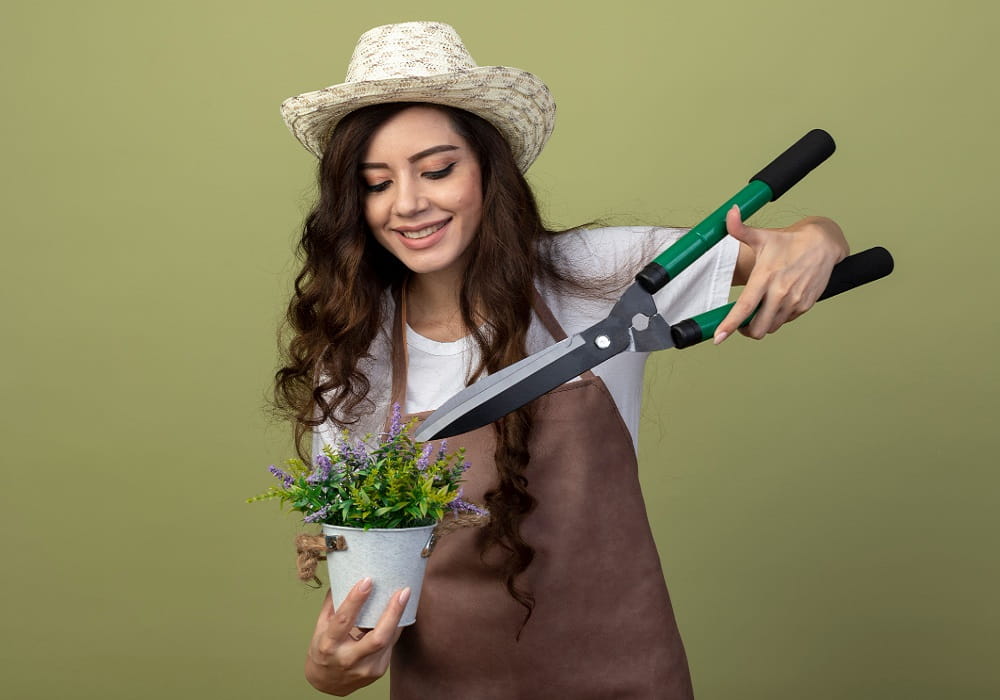Top Gardening Tips to Boost Your Garden’s Productivity
A fulfilling hobby that makes you feel happy and accomplished is gardening. However, achieving a productive garden that yields bountiful harvests and lush blooms requires more than just planting seeds and watering them occasionally. Whether you’re a beginner or an experienced gardener, these top gardening tips will help you boost your garden’s productivity and ensure you get the most out of your gardening efforts.
1. Choose the Right Plants for Your Climate
Selecting plants that are well-suited to your local climate is crucial for a productive garden. Research which plants thrive in your region and choose varieties that are known for their hardiness and productivity. Because native plants are more suited to the area and require less care, they are frequently the best option.
2. Prepare the Soil With Essential Gardening Tips
Good soil is essential for a successful gardening. To find out the pH and nutrient levels in your soil, conduct a test. Most plants prefer soil that is slightly acidic (pH 6-7) above neutral. Amend the soil with organic matter such as compost, manure, or peat moss to improve its structure, fertility, and drainage. Well-prepared soil promotes strong root growth and enhances the plants’ ability to absorb nutrients and water.
3. Use Quality Seeds and Seedlings
Starting with high-quality seeds and seedlings can make a significant difference in your garden’s productivity. Purchase seeds from reputable suppliers and choose disease-resistant varieties. If you’re buying seedlings, look for healthy, vigorous plants with no signs of disease or pest infestation.
4. Practice Crop Rotation
Crop rotation involves changing the location of plants in your garden each season to prevent soil depletion and reduce the risk of pests and diseases. Rotating crops helps maintain soil fertility and disrupts the life cycles of pests and pathogens that can build up in the soil.
5. Implement Companion Planting
Planting specific plants together can promote soil health, inhibit pests, and accelerate growth. This practice is known as companion planting. For example, planting marigolds with tomatoes can help repel nematodes, while beans and corn grown together benefit from nitrogen fixation by the beans and support from the corn stalks.
6. Water Wisely
Proper watering is essential for a productive garden. Overwatering can lead to root rot and other diseases, while underwatering can stress plants and reduce yields. For deep roots to grow, water deeply and sparingly. Mulch helps prevent evaporation and keep soil moisture. Drip irrigation systems and soaker hoses are efficient ways to deliver water directly to the plant roots.
7. Mulch to Conserve Moisture and Suppress Weeds
Mulching is an important gardening technique with several advantages. Cover your plants with a layer of organic mulch, like wood chips, straw, or shreds of leaf litter. Mulch contributes organic matter to the soil during its decomposition, controls soil temperature, inhibits weed growth, and helps hold onto soil moisture.
8. Fertilize Appropriately
Providing your plants with the right nutrients is key to boosting productivity. Use organic fertilizers, such as compost, fish emulsion, or worm castings, to feed your plants. Apply fertilizers according to the specific needs of each plant and avoid over-fertilizing, which can lead to nutrient imbalances and environmental pollution.
9. Prune and Deadhead Regularly
Pruning and deadheading are essential tasks for maintaining plant health and encouraging new growth. Remove dead or diseased branches, spent flowers, and excessive foliage to improve air circulation and light penetration. Regular pruning promotes vigorous growth and increases fruit and flower production.
10. Control Pests and Diseases Naturally
Using all-natural methods, integrated pest management (IPM) is a comprehensive strategy to managing diseases and pests. Promote the presence of beneficial insects like lacewings and ladybugs to aid in the management of pest populations. Use barriers, traps, and organic pesticides as a last resort. Regularly inspect your plants for signs of pests and diseases and take prompt action to prevent outbreaks.
11. Harvest Regularly
Regular harvesting encourages plants to produce more fruits, vegetables, and flowers. Pick ripe produce promptly to prevent overripening and reduce the risk of pests and diseases. For continuous harvest, practice succession planting by sowing new crops at intervals throughout the growing season.
12. Incorporate Organic Matter Annually
Adding organic matter to your soil each year is crucial for maintaining soil health and fertility. Incorporate compost, well-rotted manure, or cover crops into your garden beds at the end of each growing season. This practice enriches the soil with essential nutrients and improves its structure and water-holding capacity.
13. Optimize Sunlight Exposure
Most vegetables and flowers require at least six to eight hours of direct sunlight daily. Ensure your garden is located in a spot that receives ample sunlight. Prune nearby trees or shrubs that may cast shade on your garden beds. Consider using reflective surfaces or light-colored mulch to increase light exposure for plants in partially shaded areas.
Conclusion
Boosting your gardening’s productivity involves a combination of careful planning, diligent maintenance, and sustainable practices. By choosing the right plants, preparing the soil, using quality seeds, and implementing techniques like crop rotation, companion planting, and wise watering, you can create a thriving, productive garden. Remember to fertilize appropriately, control pests naturally, extend the growing season, and keep detailed records to continually improve your gardening practices. With these top gardening tips, you’ll be well on your way to enjoying bountiful harvests and a lush, vibrant garden year after year. Happy gardening!
